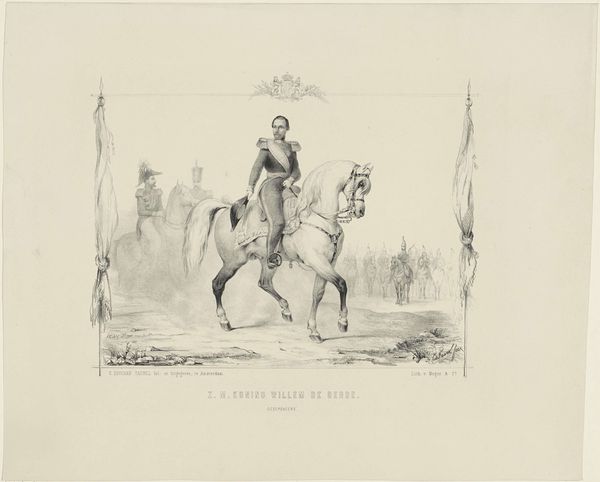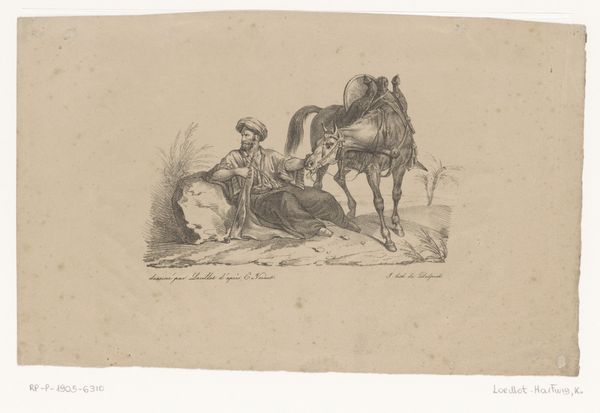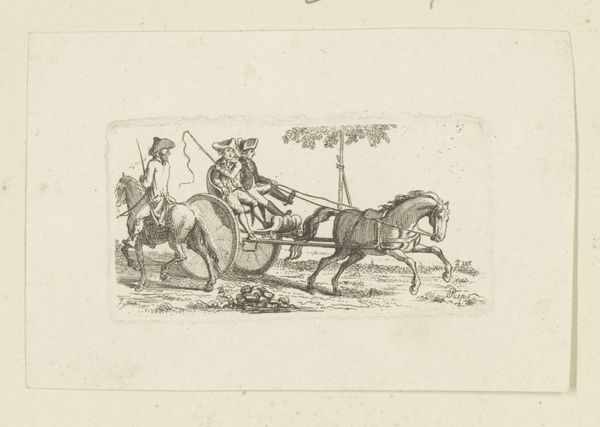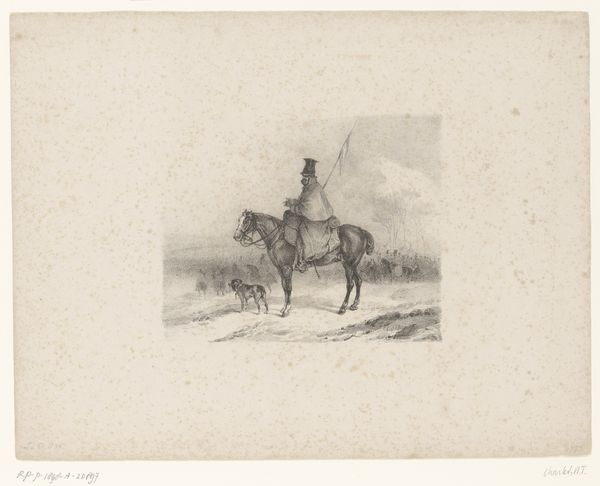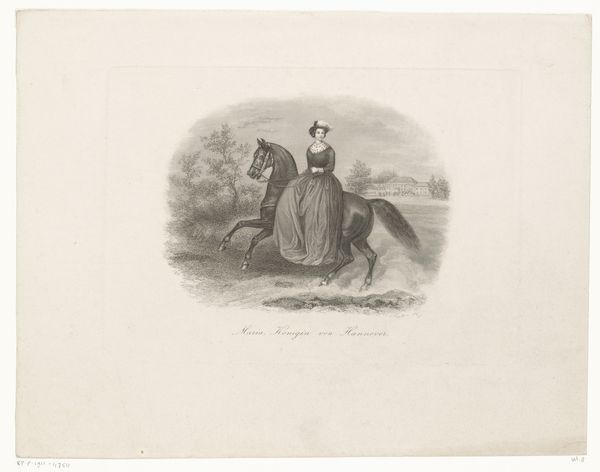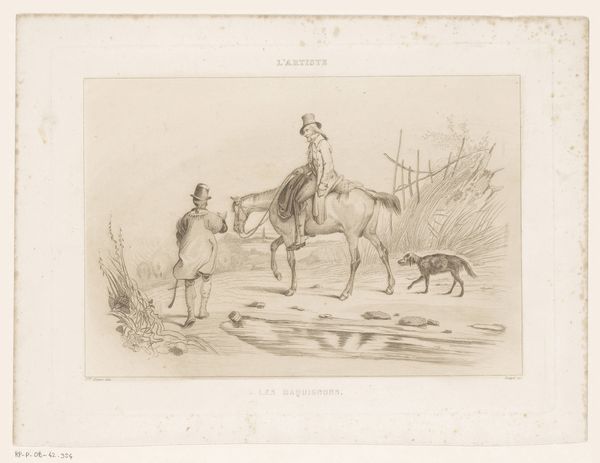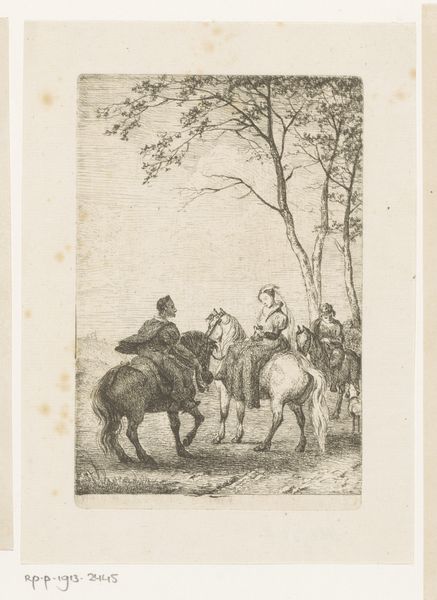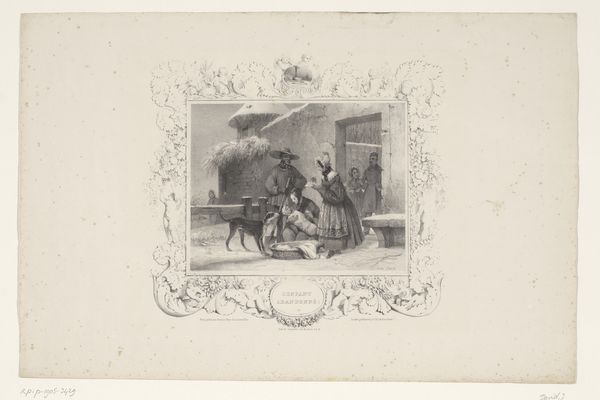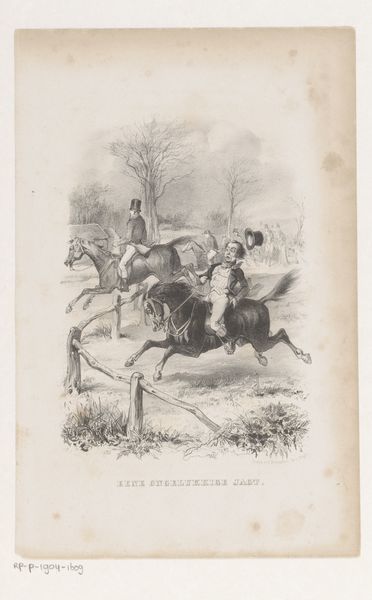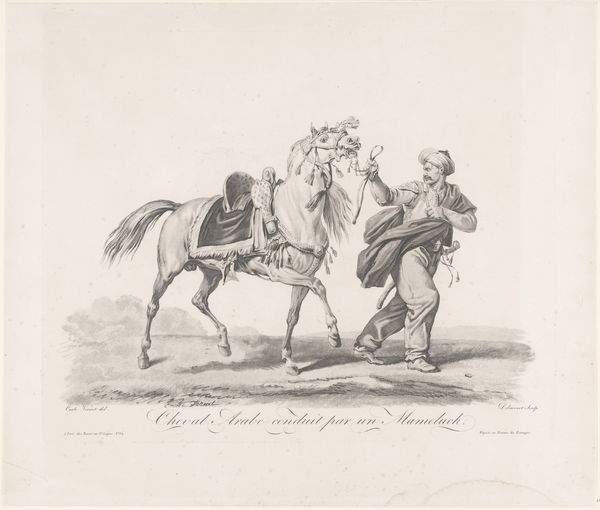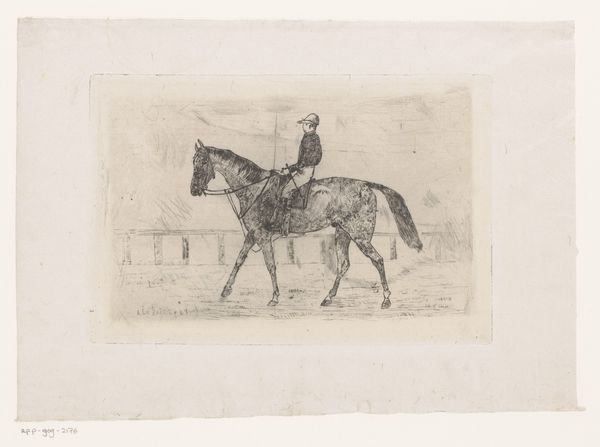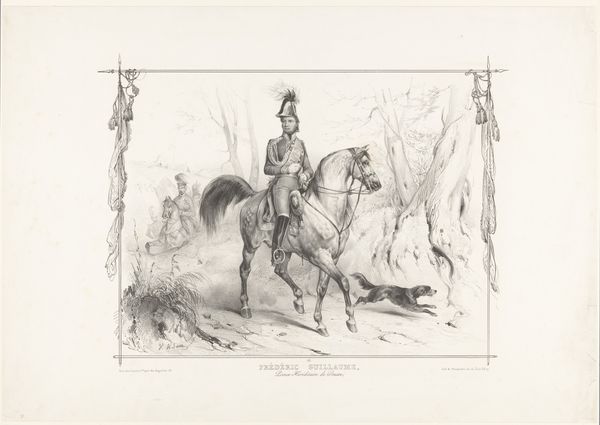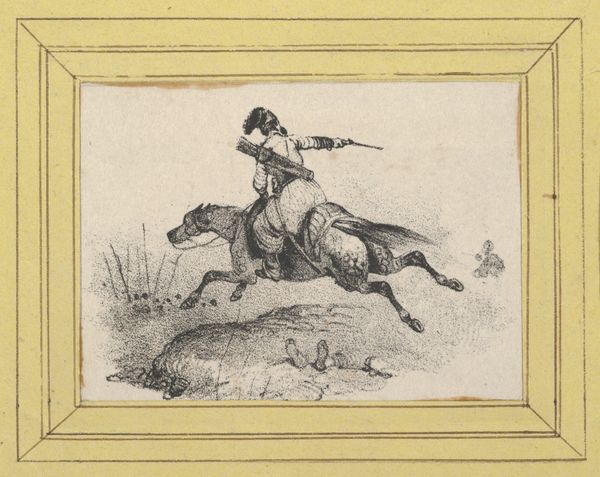
drawing, pencil
#
portrait
#
drawing
#
pencil sketch
#
landscape
#
romanticism
#
pencil
#
watercolour illustration
#
genre-painting
Dimensions: height 394 mm, width 565 mm
Copyright: Rijks Museum: Open Domain
Curator: Here we have a drawing titled "Hertogin van Nemours te paard," or "Duchess of Nemours on Horseback" created by Victor Adam around 1841 to 1842. It's rendered in pencil. Editor: My first thought? There's an immediate sense of lightness and spirited motion, despite being just pencil on paper. It's as if she might gallop right off the page! It's like a memory in charcoal, if that makes any sense. Curator: The dynamism certainly strikes one. Observe how Adam employs subtle hatching and cross-hatching to construct both the Duchess's form and that of her mount, really suggesting volume and movement. Consider how the details are more precisely delineated around the focal point—the Duchess and her horse—allowing other figures and landscape elements to fade somewhat into the background. Editor: It almost feels dreamlike, the way those background figures kind of ghost in and out. It's not just technical skill at play here; there is something very ethereal happening too, that makes me want to imagine a little story around who the Duchess was and what it felt like to be captured this way. Maybe there's something she wanted to be remembered by; that Victor captured through the rendering. Curator: Yes, you intuit that romantic air expertly. You sense it as well in the choice of subject itself. Equestrian portraits historically served to convey power, status, and control, but in Romanticism, these conventions shift. What was formerly propagandistic transforms into intimate portrayals that prioritize emotionality and individual experiences. The almost monochrome palette reinforces that sense of intimacy. The entire presentation, encased by this subtle decorative frame, invites an almost voyeuristic participation. Editor: So it becomes more about how someone *felt* on a horse, as opposed to just *being* on one! This almost suggests she wasn't a Duchess when riding and maybe more her actual, most playful, truest self. Victor certainly caught her—whoever she really was—in such exquisite energy. And it really does make the whole thing come alive and gallop with spirit! Curator: Absolutely. Adam used technique and aesthetics to elicit that experience—the Duchess liberated, and perhaps the viewer, if only momentarily, from the bindings of convention and reality. It speaks volumes using very few lines. Editor: In the end, there's so much packed in a simple pencil drawing of a woman on a horse, and for me, I think this will have changed what and how I see that forever now. Curator: Yes, it has changed my understanding too. An exquisite rendering and insightful observation on our part.
Comments
No comments
Be the first to comment and join the conversation on the ultimate creative platform.

